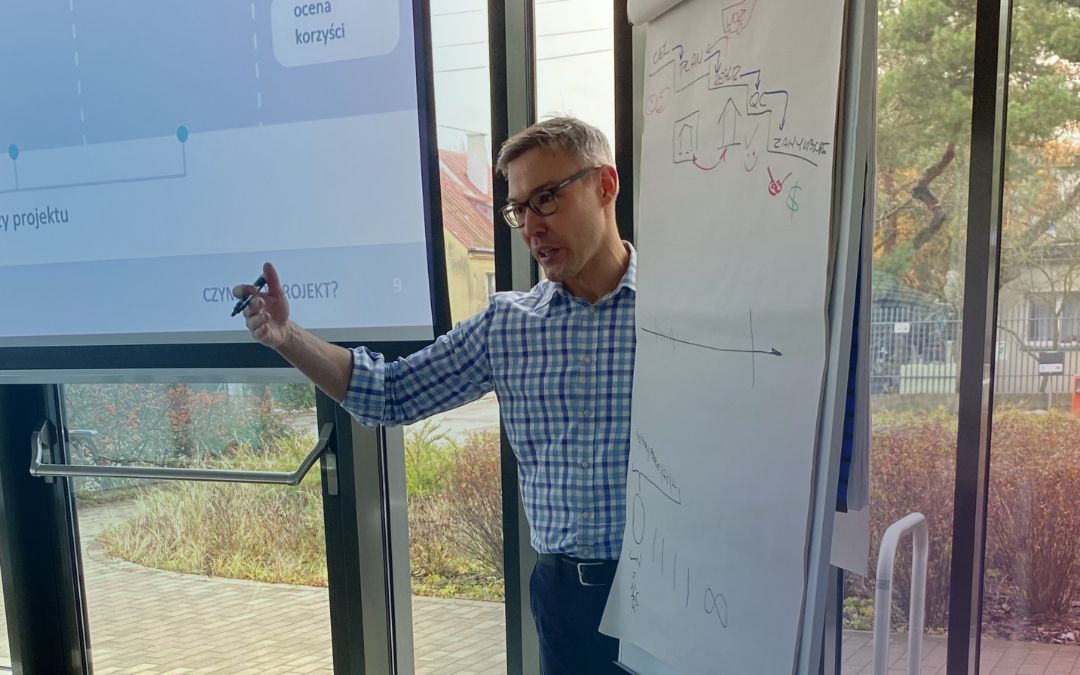The success of any project depends, among other things, on the leader's skills. How effectively he will communicate with team members and the environment. How efficiently will he react to changes, resolve conflicts and execute tasks, and above all - engage his team.
A good, self-aware leader is not one-dimensional. He should not act according to a template, without taking into account the constraints of the situation and his colleagues. One of the key competencies of an effective leader is: a rich reservoir of emotional intelligence. It is responsible for the ability to recognize one's own and other people's emotional states, as well as the ability to consciously use one's emotions and deal with the emotional states of other people. According to Daniel Goleman, a psychologist who co-created the concept of emotional intelligence, it is responsible for six different team management styles.
Democratic style
In this approach, the opinion of every team member counts. Decisions are made together with employees, after listening to their opinions. Employees feel appreciated and take responsibility for the development of the organization. A leader is required to have the ability to listen and be open to the ideas of other people. This style is conducive to building a good working atmosphere, but the downside is that decision-making takes time.
Affiliate (partnership) style
The most important thing here is communication and avoiding excessive procedures. The leader gives positive feedback, praises, helps, and emphasizes ingenuity and proactive attitudes. The result is greater loyalty of team members, their commitment and trust. A leader is expected to have a high level of empathy, very good communication skills and great sensitivity to potential problems. This style requires a clear definition of goals and ensuring that team members have the appropriate level of competence to achieve them. Otherwise, chaos and low work efficiency may occur.
Visionary style
The leader shows team members the goal they should strive for, but does not impose the method of achieving it. He infects them with his vision and inspires them. Each team member knows the business justification for their actions, i.e. they know why they do what they do and understand the value it brings. A leader is required to be able to inspire and to precisely set and communicate goals. This approach works well when we are facing change and a new course of action is needed. If the leader is not recognized as an authority (e.g. by a team of experts), this approach may generate threats.
Coaching style
This style, most of all, focuses on team development. The leader focuses on the resources of each team member, trying to develop them. He is able to delegate tasks and link private goals with those of the organization, thus giving employees space for development. The leader is expected to focus equally on each team member and be highly involved in the development of each of them. This creates a risk that energy will be directed to the weakest resources, which will result in too little efficiency. This is a time-consuming approach that will not work in a team composed of people who expect "hand-holding" and are characterized by high uncertainty.
Prescriptive style
A style in which the leader defines not only the goals, but also how to achieve them, supporting this with a high level of monitoring and control. There is no space for creativity, initiative and development of team members, which may lead to increased frustration and employee turnover. This style requires a leader to be highly self-aware and able to manage his or her own emotions. It is useful in crisis situations that require decisive action and being pushed out of the comfort zone. However, when used long-term, it is not conducive to team building and may lead to burnout.
Process style
The focus here is on standards and processes, repeatability of results and compliance with organizational requirements. The leader is characterized by low empathy and expects high results and independence, without giving space for initiative and creativity. If employees do not meet standards, they tend to perform tasks on their own, instead of providing feedback and strengthening competences. This style will work well with a high level of internal motivation and high competences of team members. In the long run, it can lead to excessive pressure and, as a result, demotivation.
Is there a best solution?
The first four approaches are focused on team development, but this does not mean that the prescriptive and process styles should not be used. The key is to consciously choose an approach in relation to the situation, the goals we want to achieve and the person we are working with. In a crisis situation in the project that requires immediate action, a command approach will work better: taking on the role of the commander and, consequently, quickly getting out of the hole. It will take longer for a visionary, a partner, and even more so a democrat. This is why Even though we feel comfortable with one or two approaches, we should consciously leave our comfort zone and choose a way of behaving appropriate to the situation.. Pay attention to the level of experience and motivation of our colleagues in relation to the tasks they face. Our experienced and previously independent specialist may feel lost when faced with a new scope of work. In such a case, the current approach of delegating and giving space in the implementation of tasks is unlikely to work. However, it may turn out that relying on specific commands and short tasks that contain tips on how to perform them will be more effective. Servant leader does not always turn out to be the best solution 😉
To choose our approach correctly, we should know our colleagues well, and also be aware of the current situation in the team, for example the existence of disorders at one of the levels of Maslow's pyramid of needs. There are many variables that need to be taken into account, and our leadership skills should gradually develop. From my perspective a good idea is to observe other leaders whose competences in this area we consider high and adapt their behavior to your own situation, or participate in specialized training that helps develop leadership skills. One of them is Resource, Communication and Stakeholder Management (one of the modules preparing to obtain the PMP certificate)
Are you aware of how you manage teams? Do you talk to your colleagues and know their perspective?
Author: Łukasz Lipski










